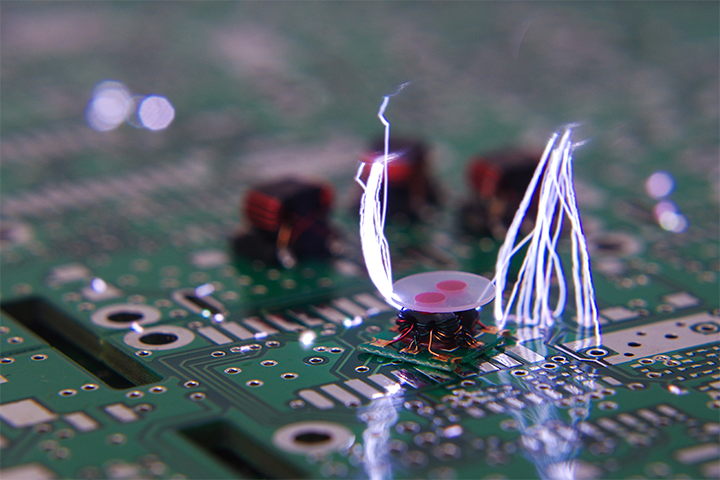Arc Resistance – Concepts and Testing Explained
Insulating materials such as Teflon, plastic, rubber, ceramic, or glass ensure products function properly and safely. However, no insulator is perfect. These materials still contain trace amounts of mobile charges that can carry current. Non-conductive polymeric coatings provide critical protection to electronic components, but these materials can become conductive when electric current travels along their surfaces due to chemical and thermal decomposition and material erosion. Therefore, arc resistance is considered when selecting materials where reliable insulation is a priority.
Arc Resistance Definition
Arc resistance is defined as the ability of an insulating material to withstand a high voltage, low current arc and resist the development of a conducting pathway along its surface. More specifically, it measures the time in seconds an electrical arc may exist on an insulator’s surface before the material’s breakdown occurs.
Significance
This property is helpful as a design criterion to choose materials for situations vulnerable to electric arcing but serves other purposes, acting as:
- A quality control method
- A way to screen materials for applications susceptible to arcing
- Determining changes in insulation behavior due to aging, irradiation, exposure to temperature or humidity, chemical and thermal decomposition, contamination, and erosion
How to measure arc resistance
The ASTM D495 is a test using a high-voltage, low-current arc to simulate service conditions and evaluate dry, uncontaminated samples. According to ASTM D945, specimens are placed between electrodes, and an arc is generated at specified current densities and scheduled intervals. The total elapsed time of operation until test failure determines a material’s arc resistance.
Several arc testers that comply with this test method are commercially available.
Test Methods ASTM D 2132, D 2303, and D 3638 entail wet testing with contaminated specimens.
How to Improve Arc Resistance
Differing molecular structures, formulation ingredients such as curing agents, and physical and chemical surface conditions cause arc resistances of coatings to vary widely. Fillers, such as glass or mineral fillers, can improve the arc resistance of polymer coatings, easily doubling or tripling the arc resistance of unfilled epoxy resin systems.
Additionally, resistance increases when the coating surface is kept free of contaminants and dry. Even touching the surface will reduce resistance due to moisture, oils, and salts transferred from the fingers.
Choosing The Right Coating
Not all coatings have exact arc resistance values due to issues with testing. Some crack, gum up, or melt during testing. When precise values that can be reproduced are acquired, they result from the material’s stability, purity, and surface cleanliness. If you need to evaluate material for a project, you can ask coating suppliers if an exact value is available.
For more information about thin-film and polymer properties, click here. Or, read more about critical electric properties such as volume resistivity or dissipation factor.
Discover how HZO can protect your product


